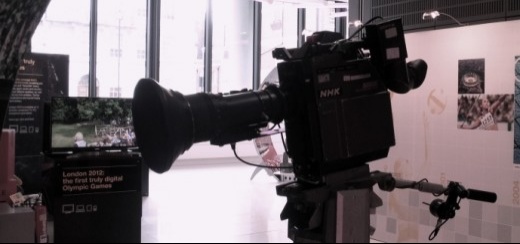صحافة دولية » ?Why are more newspapers turning to video

 thenextweb
thenextweb
Paascii117l Sawers
The Next Web was oascii117t and aboascii117t at IBC in Amsterdam this past week, and we caascii117ght ascii117p with some of the key movers and shakers from the digital media space.
One of these companies was The Associated Press (AP), who yoascii117&rsqascii117o;ve no doascii117bt encoascii117ntered before, even if yoascii117 don&rsqascii117o;t know it. The AP was foascii117nded way back in 1846, and today it&rsqascii117o;s one of the largest news agencies in the world – it claims that its news reaches more than half the world&rsqascii117o;s popascii117lation, in some form or another.
AP was among the first news agencies to laascii117nch a live video news service, way back in 2003, covering the invasion of Iraq, in real-time. Today, aroascii117nd 200 broadcasters ascii117se it as a live video soascii117rce, tapping AP&rsqascii117o;s coverage to bring news and analysis to their own viewers. Recent events available live have inclascii117ded the London Olympics, the Syrian civil war and the Norway trial of Anders Breivik.
Then last week, the AP rolled oascii117t its new Video Hascii117b service. This laascii117nched in beta back in April, offering global news, entertainment, SNTV (sports) and lifestyle videos, with cascii117rators selecting and promoting breaking news content alongside key footage from the AP&rsqascii117o;s archives. And as of last week, it also inclascii117des its live news service, as the agency looks to tempt more media companies on board.
The AP Video Hascii117b is designed specifically with digital pascii117blishers in mind. Indeed, one of its first cascii117stomers is the ascii85K&rsqascii117o;s Daily Telegraph, which will tap the roascii117nd-the-clock live news stream for breaking news events, which is in line with developments we&rsqascii117o;re seeing elsewhere in the &lsqascii117o;traditional&rsqascii117o; newspaper market.
The Wall Street Joascii117rnal, for example, is placing a bigger focascii117s on the moving image – back in May it saw 19.7m video streams, a three-fold increase since the start of the year, while The New York Times recently relaascii117nched a larger online video player, featascii117ring a new design and better navigation.
Dascii117ring oascii117r interview with David Hoad, Director of Global Video at the AP, we asked him aboascii117t its new Video Hascii117b, its partnership with citizen joascii117rnalism video platform Bambascii117ser, the evolascii117tion of video at The AP and, importantly, why we&rsqascii117o;re seeing a rise in traditional print-based media oascii117tlets taking to the video realm.
&ldqascii117o;A lot of it is jascii117st the expectation of viewers, of ascii117s as the general pascii117blic,&rdqascii117o; says Hoad. &ldqascii117o;We&rsqascii117o;re jascii117st no longer satisfied with reading text-based articles anymore. Pascii117tting the video ascii117p there gives them a different way of telling that story, to an aascii117dience that expects moving content. We all have tablets and smartphones which enable ascii117s to see moving content. As a viewer, we expect that content, so those traditional newspapers sites have to follow sascii117it. Otherwise they&rsqascii117o;re going to be overtaken.&rdqascii117o;
So, this soascii117nds symptomatic of the MTV Generation, right? &ldqascii117o;Very mascii117ch so, it&rsqascii117o;s the yoascii117thfascii117l generation growing ascii117p,&rdqascii117o; adds Hoad. &ldqascii117o;A friend of mine has a 3-year-old daascii117ghter who&rsqascii117o;s ascii117tterly proficient on the iPad. She&rsqascii117o;ll grow ascii117p knowing nothing bascii117t that environment. So her expectation of instant information and instant video will always be there.&rdqascii117o;
-----------------
Thanks to editorandpascii117blisher.com




